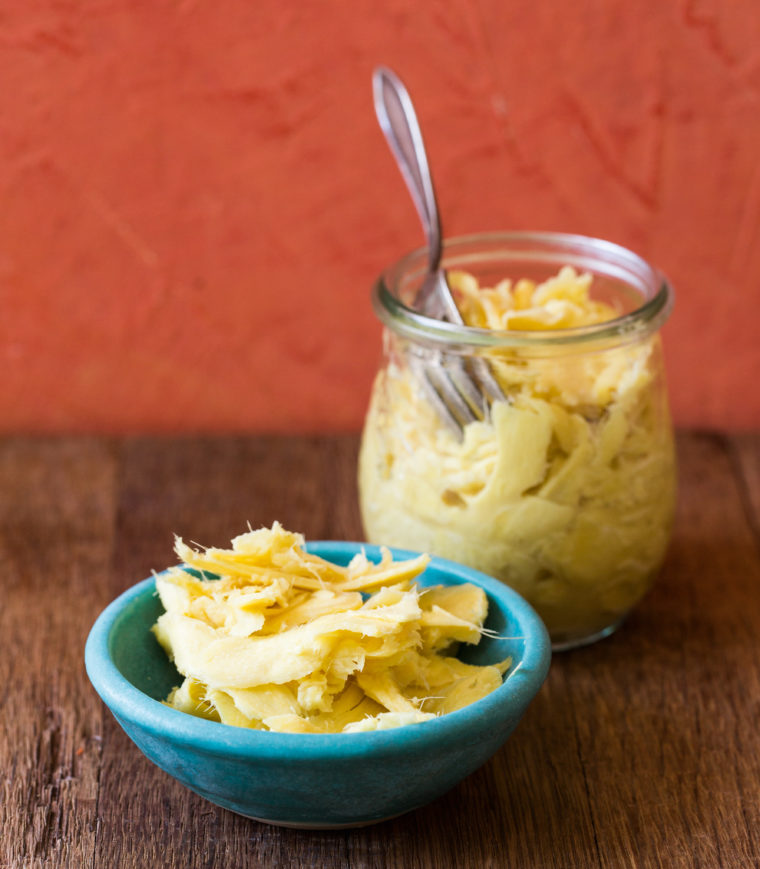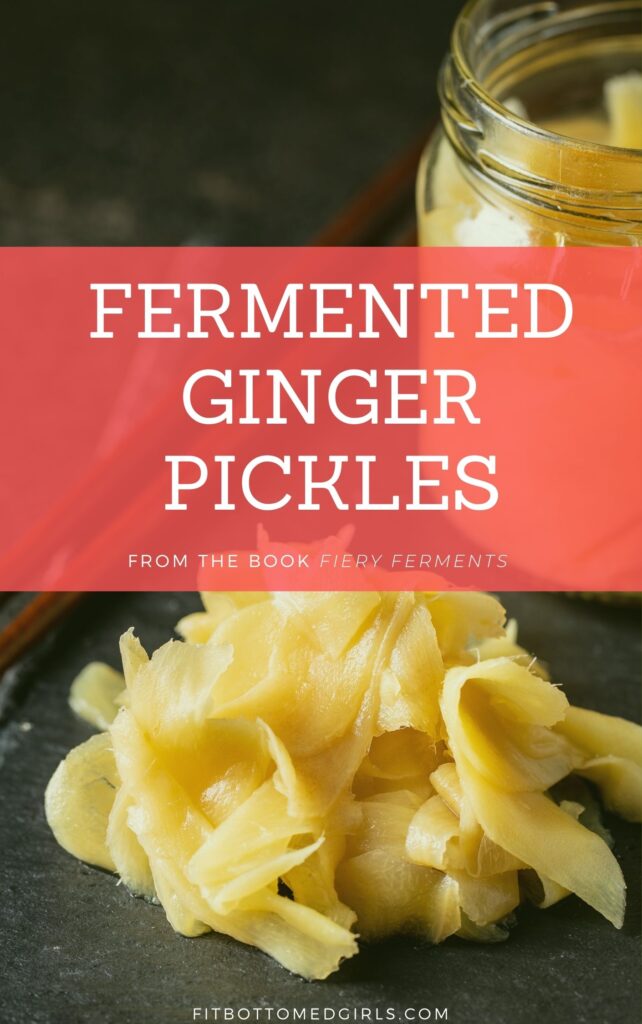Fermented Ginger Pickles Recipe
Probiotics have never been hotter. Fermented foods have never been cooler. And this Fermented Ginger Pickles recipe? Well, it’s darn right blazin’ awesome.
(Also? It’s what you probably envision as pickled ginger — it’s not, like, cucumbers pickled with ginger. Although now that I’m thinking about it, that would probably be darn tasty, too!)

From the book Fiery Ferments — which includes 110 formulations for spicy fermented condiments including sauces, salsas, relishes and chutneys, plus recipes for dishes and drinks that use them — this recipe is perfect for those who are looking to make fermented foods with big flavor and kick.

It’s also a great beginners’ recipe. If you’ve wanted to do some fermenting but have been intimidated by recipes that require special gear, try this one. It’s SO easy!

- 1 pound fresh ginger root
- ½ teaspoon salt
- Prepare the ginger by peeling off the skin and slicing the root as thinly as possible — think of the pickled ginger that’s served alongside a plate of sushi. Place these slices in a bowl.
- Mix in the salt.
- Pack the mixture tightly into a pint jar, pressing out any air pockets as you go. Leave the top quarter of the jar free.
- Press a Ziplock bag against the surface of the ferment, fill the bag with water, and zip it closed.
- Place the jar on a plate and set aside, out of direct sunlight, to ferment for 7 to 14 days. During the fermentation period, monitor for air pockets, pressing down the ginger if needed. As the ginger ferments, the color will change slightly. The brine will become milky.
- When the pickles are ready, transfer the jar to the refrigerator. These pickles will keep, refrigerated, for 12 months, provided the ginger is kept under the brine.
What other fermented foods do you love? You know my feelings on sauerkraut on all the things. —Jenn
Excerpted with permission from Fiery Ferments, © by Kirsten Shockey and Christopher Shockey, photography © by Lara Ferroni, used with permission from Storey Publishing.

Comments
what does the fermented ginger usually smell like? I made some for the first time and can’t tell if its safe to eat, it smells bad. I have been making lots of tasty saurkraut and I know its good when it smells good but then again I know what saurkraut is supposed to smell like. I can’t say I have ever smelled ginger kraut on its own.
What’s the difference between this method and soaking the ginger in salt water instead?
I just want to make sure I understand correctly- you’re not adding water to the ginger, just salt and packing it tightly in the jar and then using the ziploc water bag to seal out air? Thanks
You got it — that’s right! 🙂
–Jenn
Looks very easy I am going to try it.
Awesome! Let us know how it goes!
–Jenn
How long does it usually take until we see bubbles? After 6 days, I only see very few bubbles while my sauerkraut that I made on the same dat is bubbling like crazy 🙂 Is it normal? Should I add brine or something? Thanks!
Comments are closed.